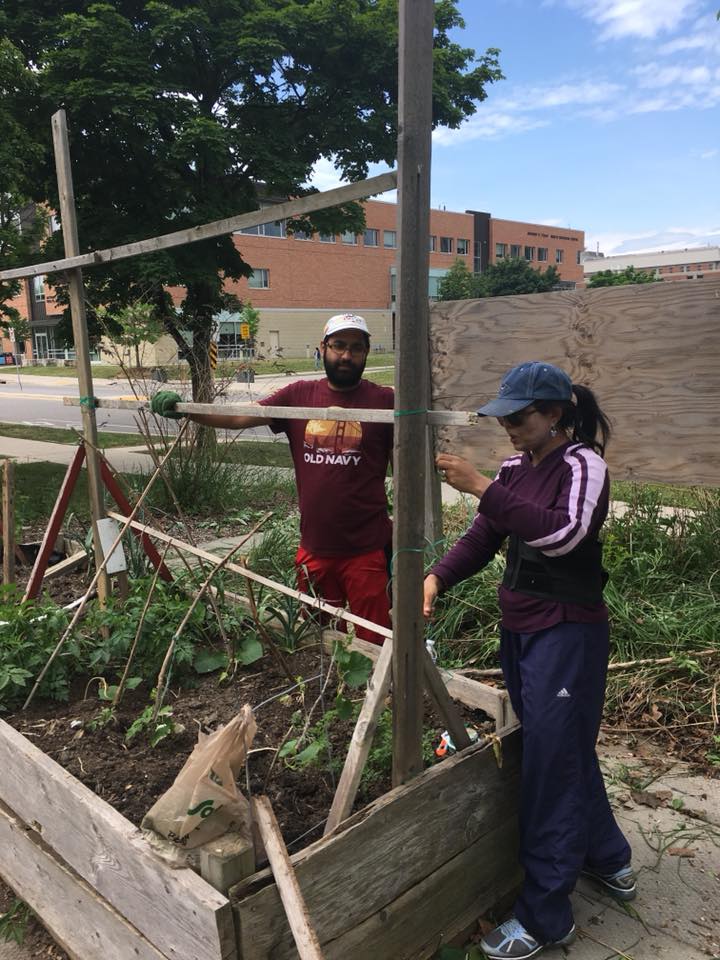

Permaculture Design:
The CCG was designed and is maintained through the practice of permaculture design. Permaculture is a set of principles developed in the 1970’s that guide a sustainable ecosystem. These principles include: care for the earth, care for the people, and the distribution of abundance to both the earth and the people. Permaculture attempts to mimic what happens in natural systems and maximize biodiversity. Plants will naturally grow in cooperative communities, mutually supporting one another by providing ecosystem services such as fertilization or nitrogen fixation. We have recreated these cooperative communities through integrated planting, re use and recycling of plants, or catchment of rainwater.
Bill Mollison, the founder of permaculture identified "permanence and stability in a landscape are most easily achieved when one works with rather than against ecological forces" (in Hemenway, 2009, pg. 44). In a permaculture system, a plan is carefully thought out, which includes identifying and working with natural conditions of the location, identifying water harvesting locations and incorporating the skills, needs and resources of the individuals who will use the garden. It will implement an evolutionary plan that will lead to a sustainable system that produces more, uses less energy than it consumes, builds the quality of the soil, bringing in diversity of plants, trees, animals, and necessary insects, harvests water, and provides for everyone interacting with the site.
In practicing permaculture principles, we are reducing the need for interventions such as pesticide, herbicide or other potentially harmful externalities added to the garden. The ecosystem remains balanced, biodiverse, and develops sustainably for the future.

